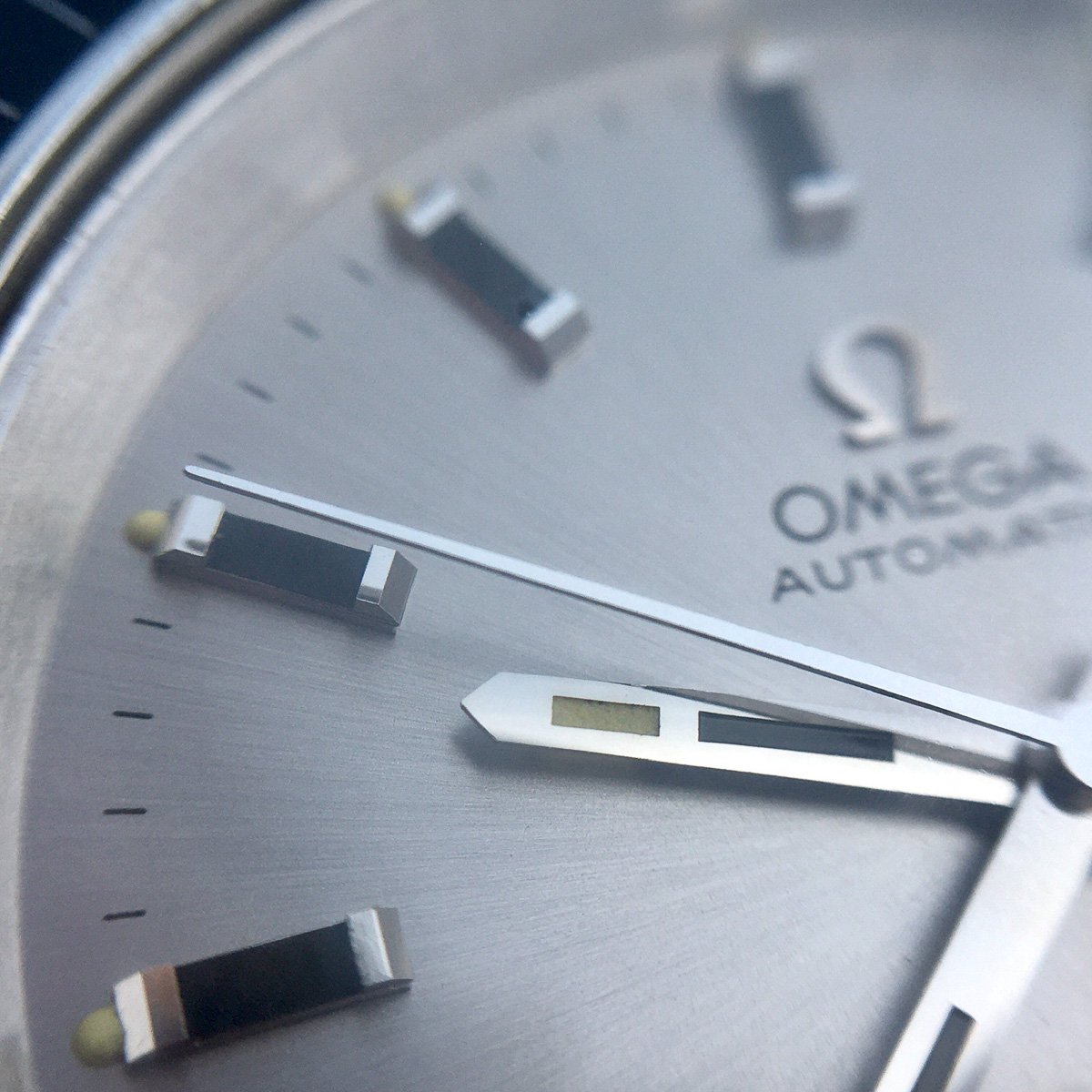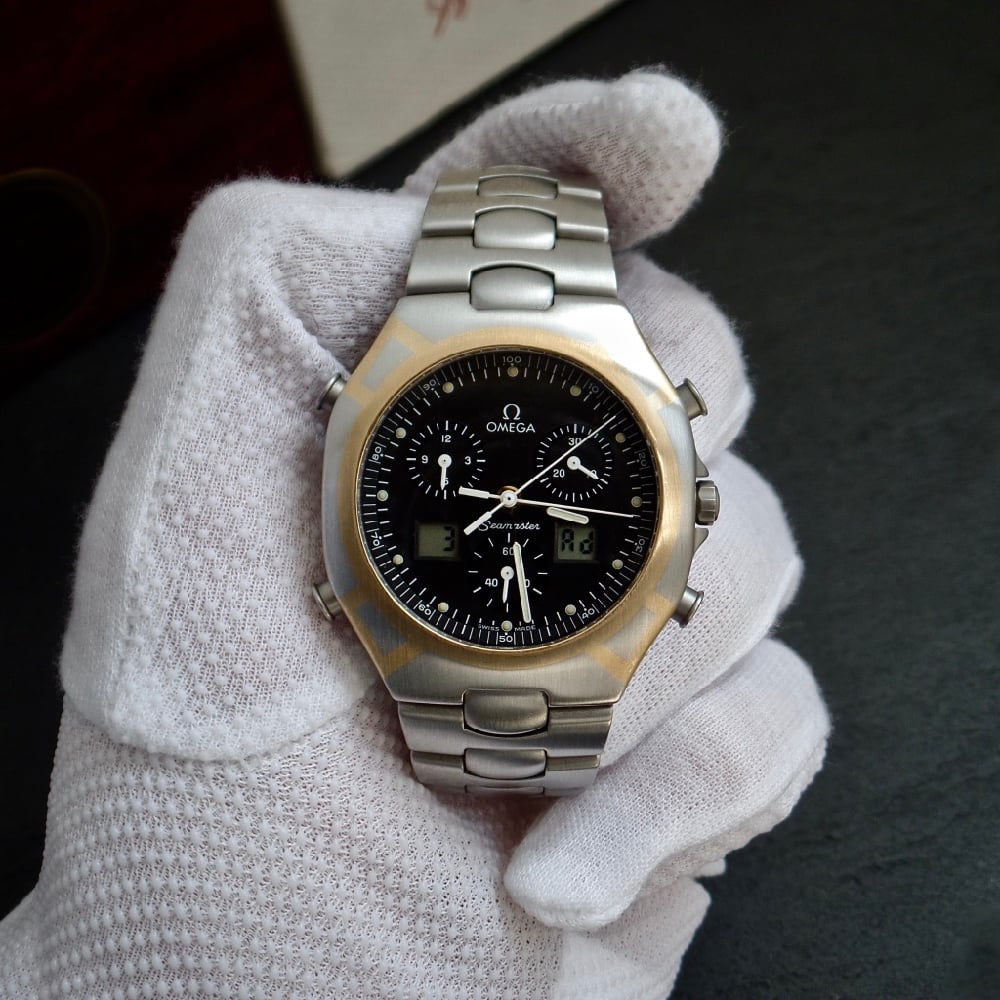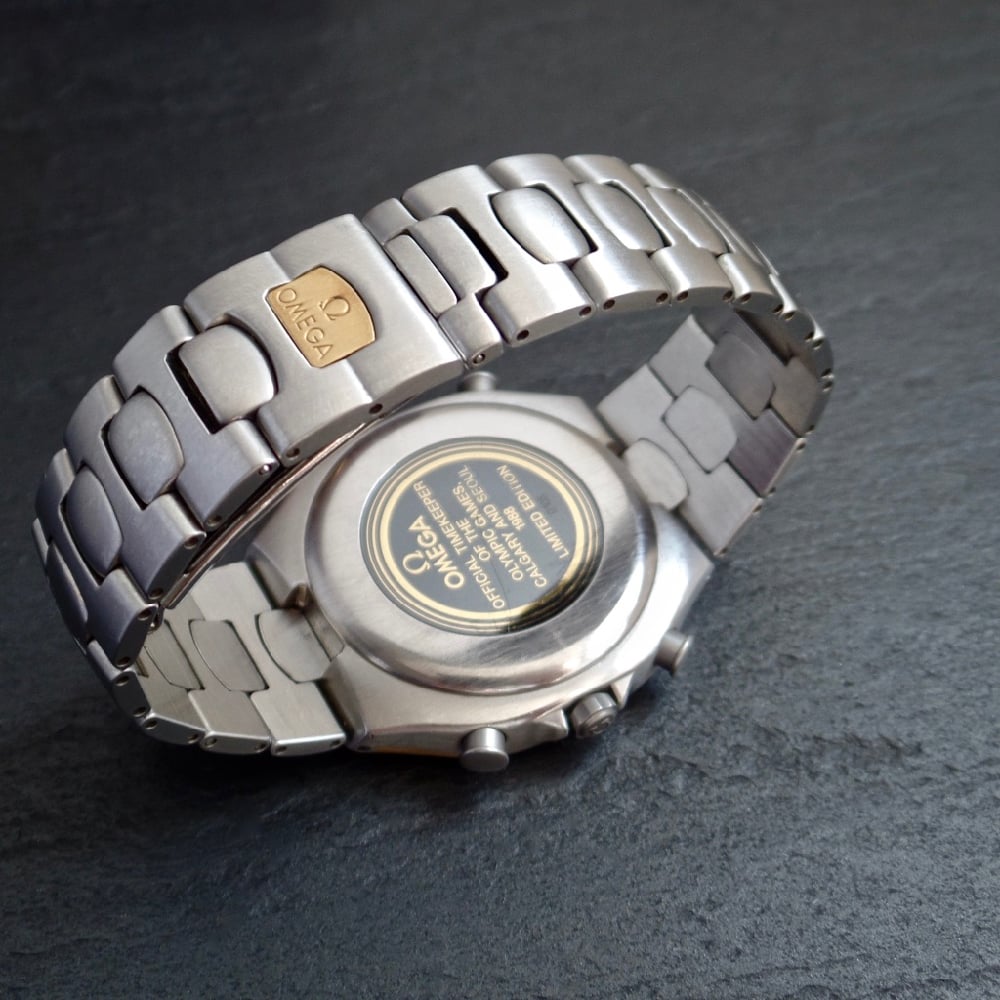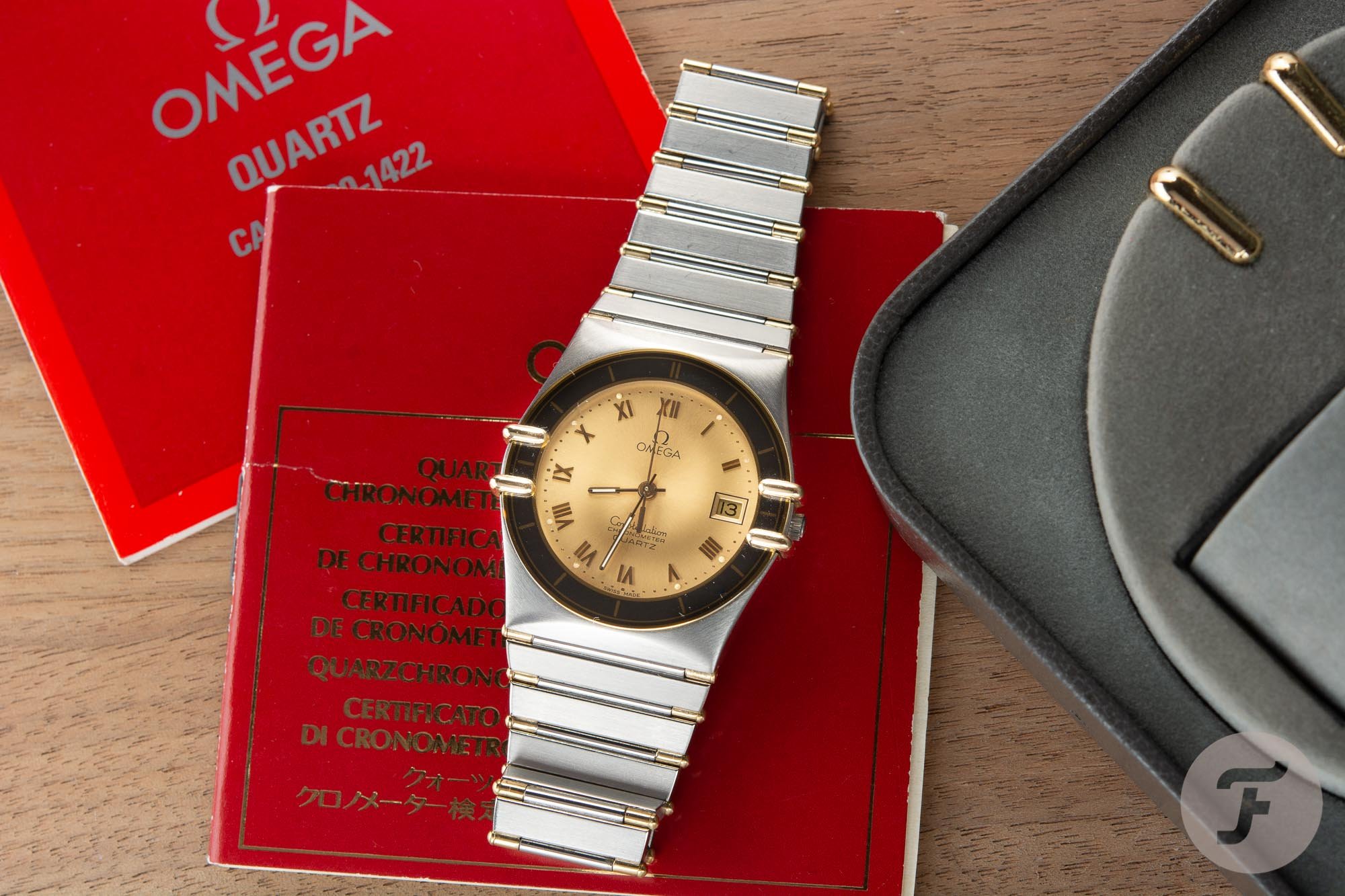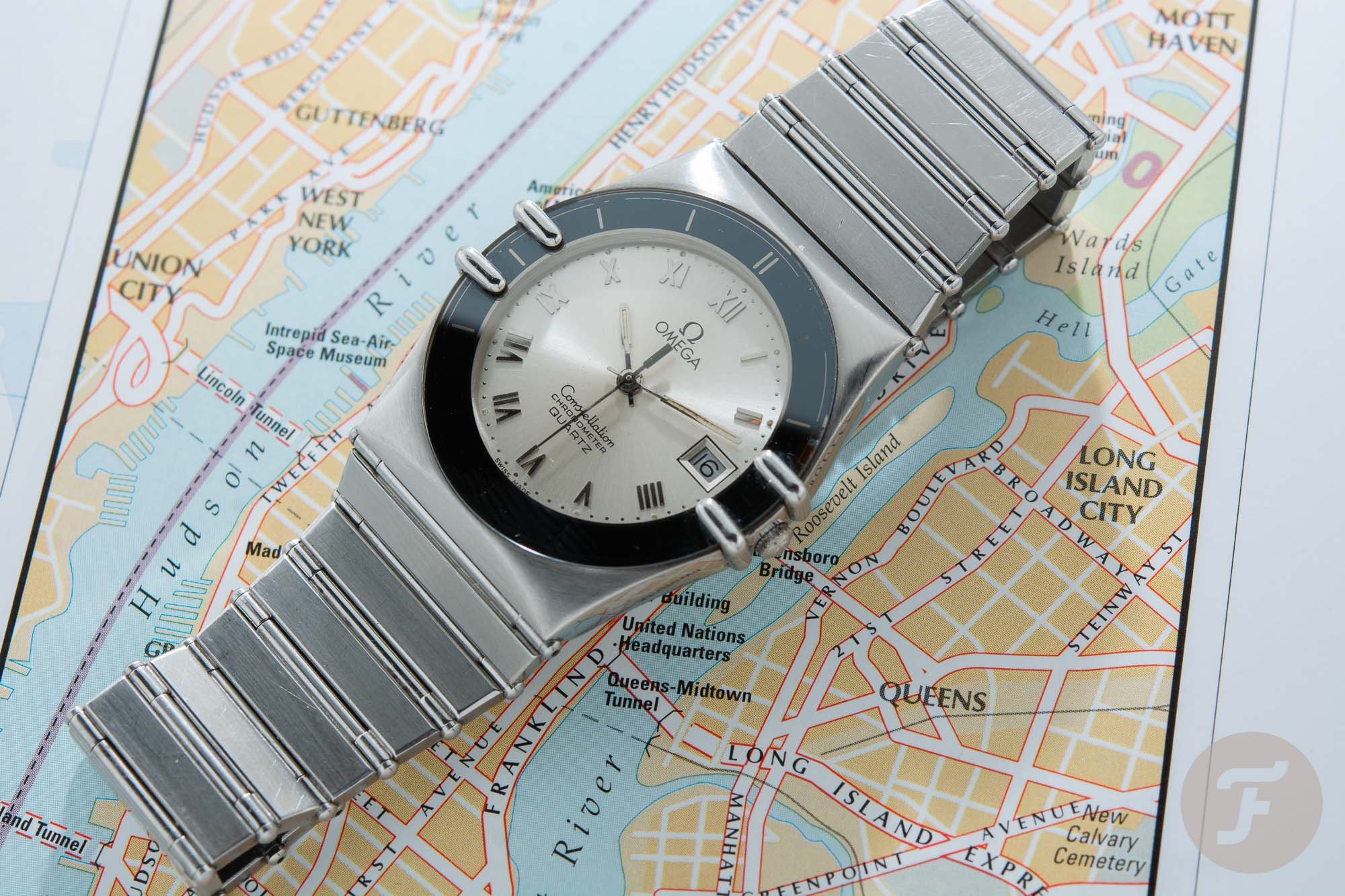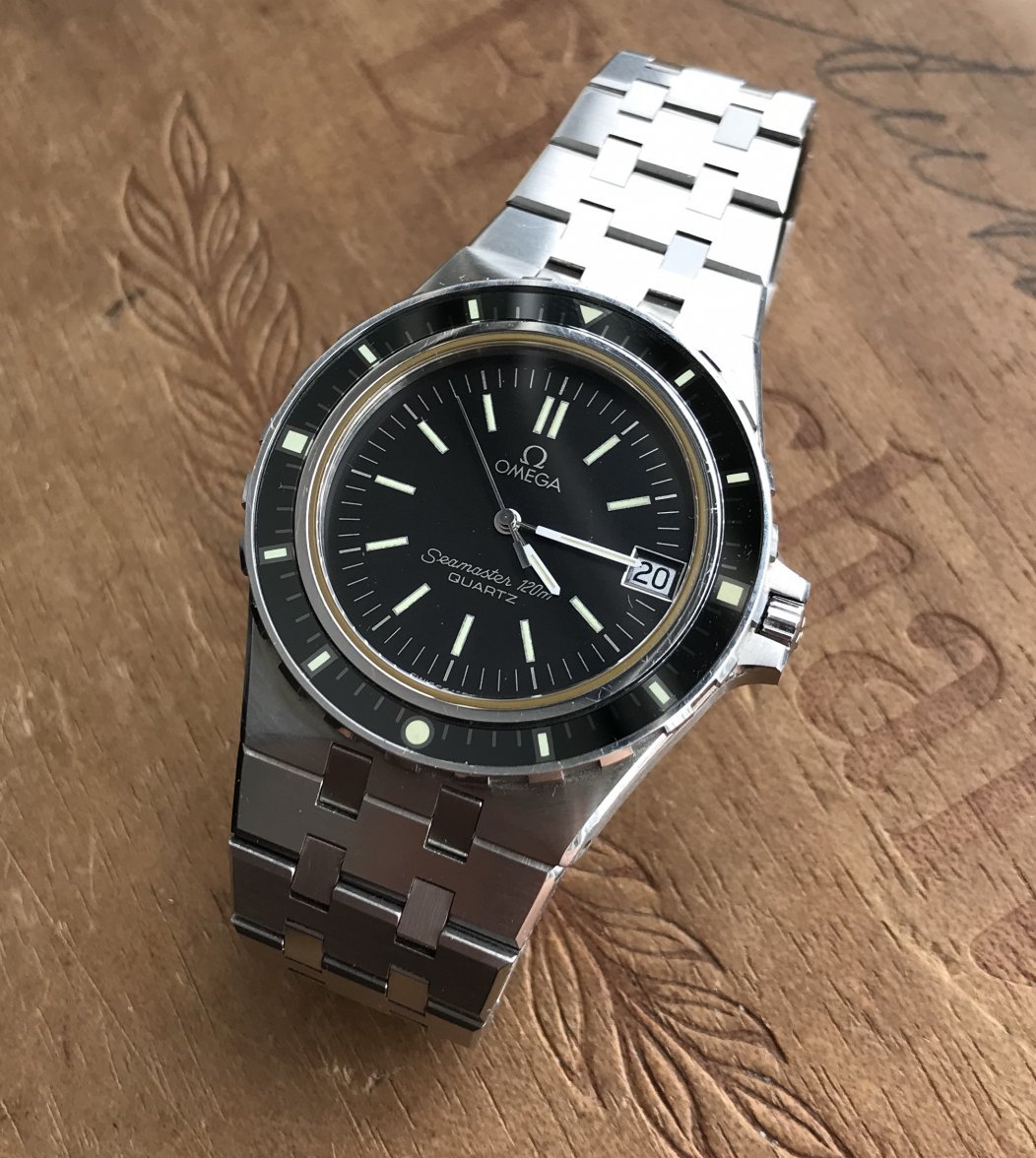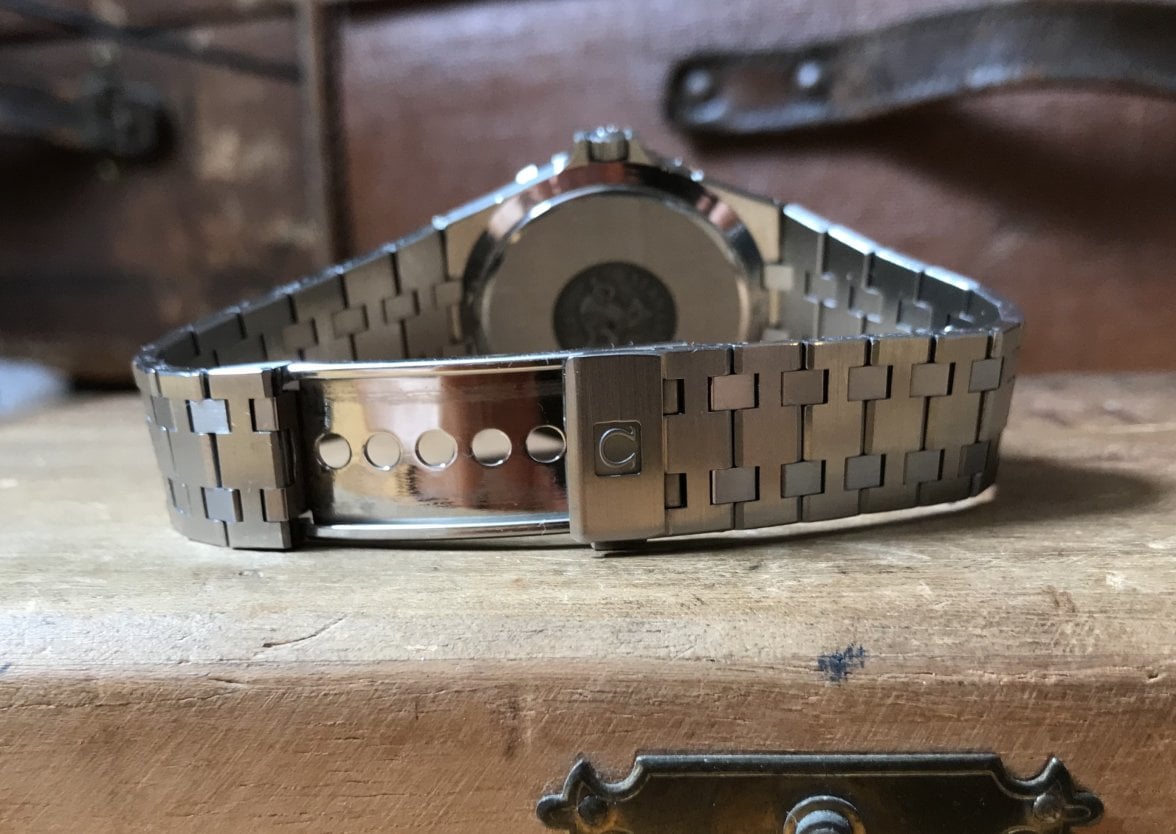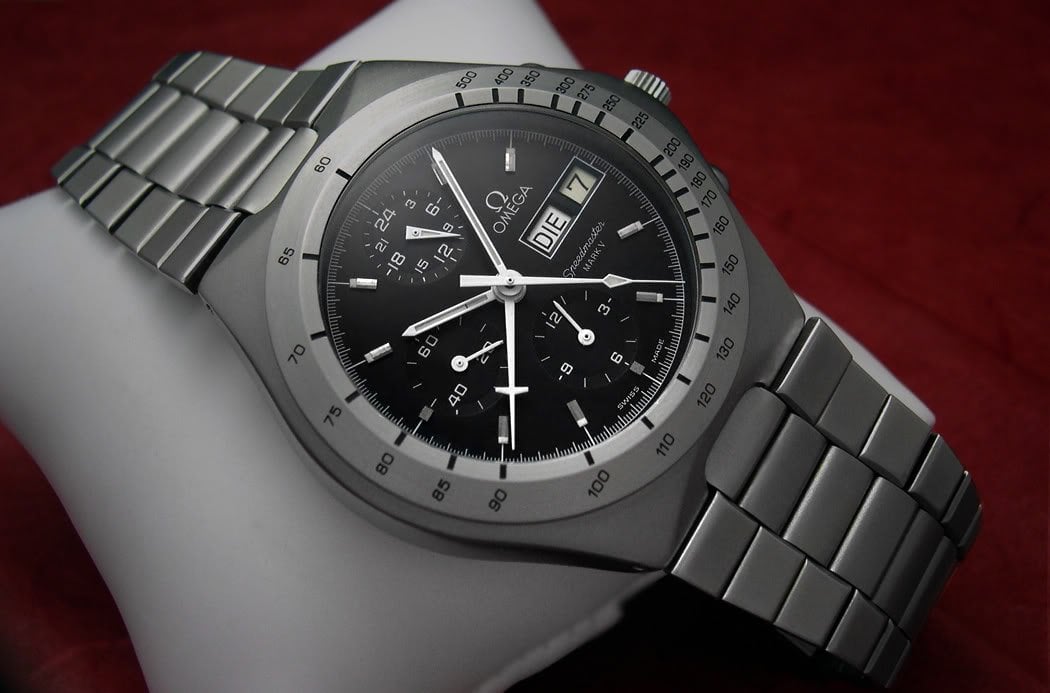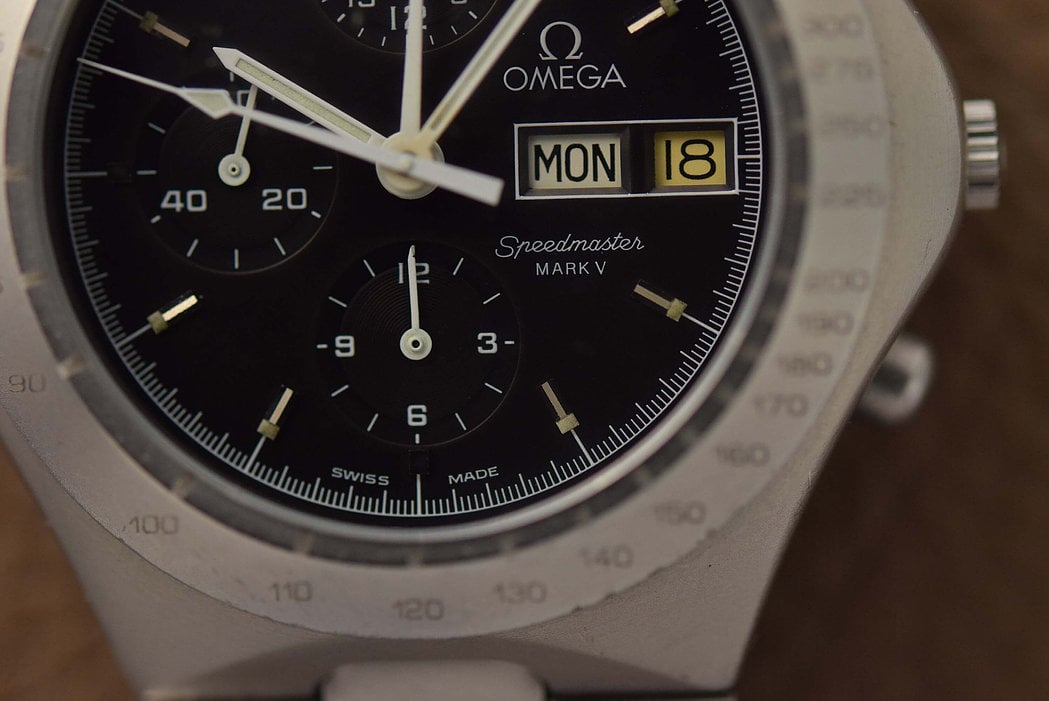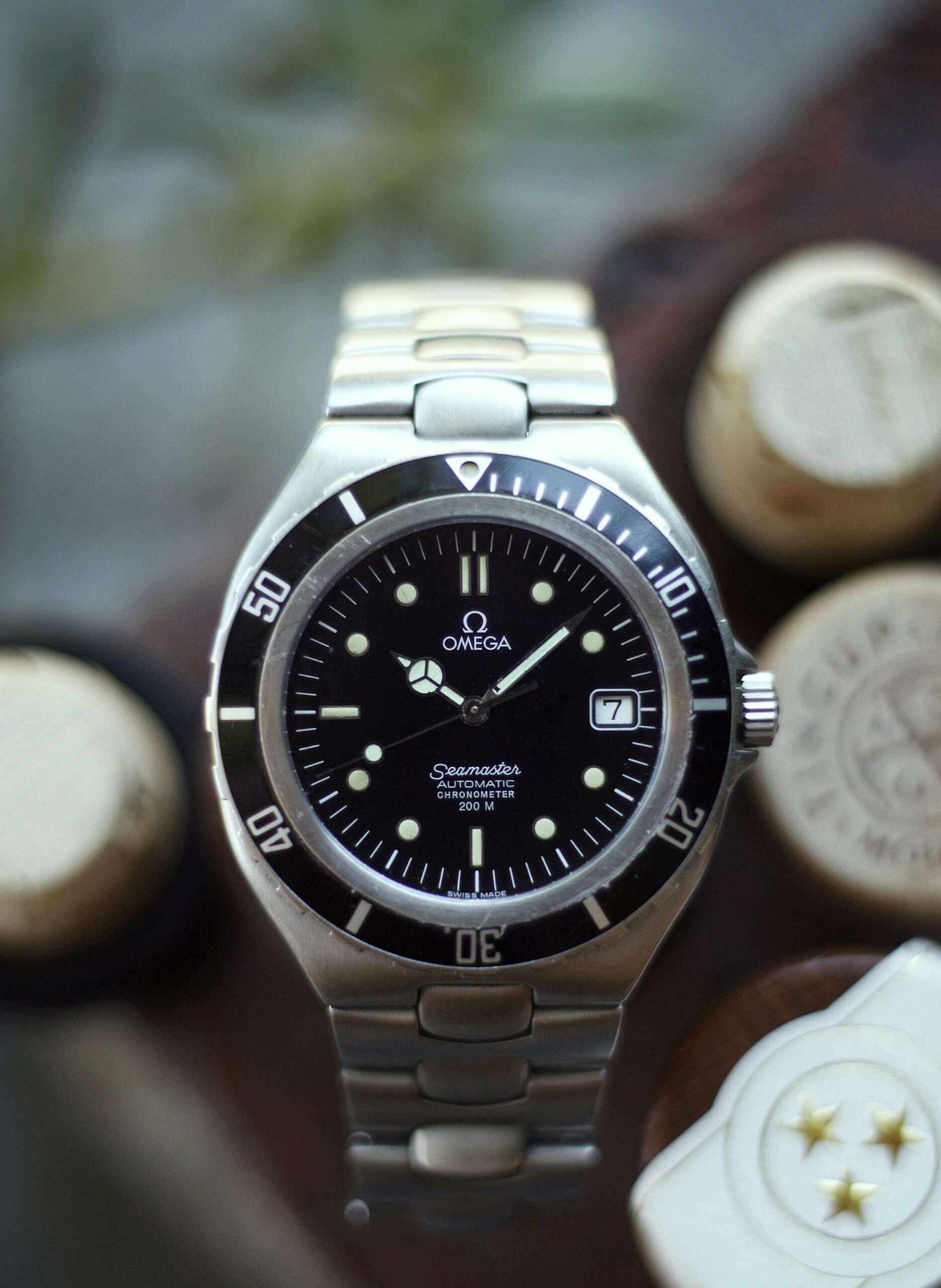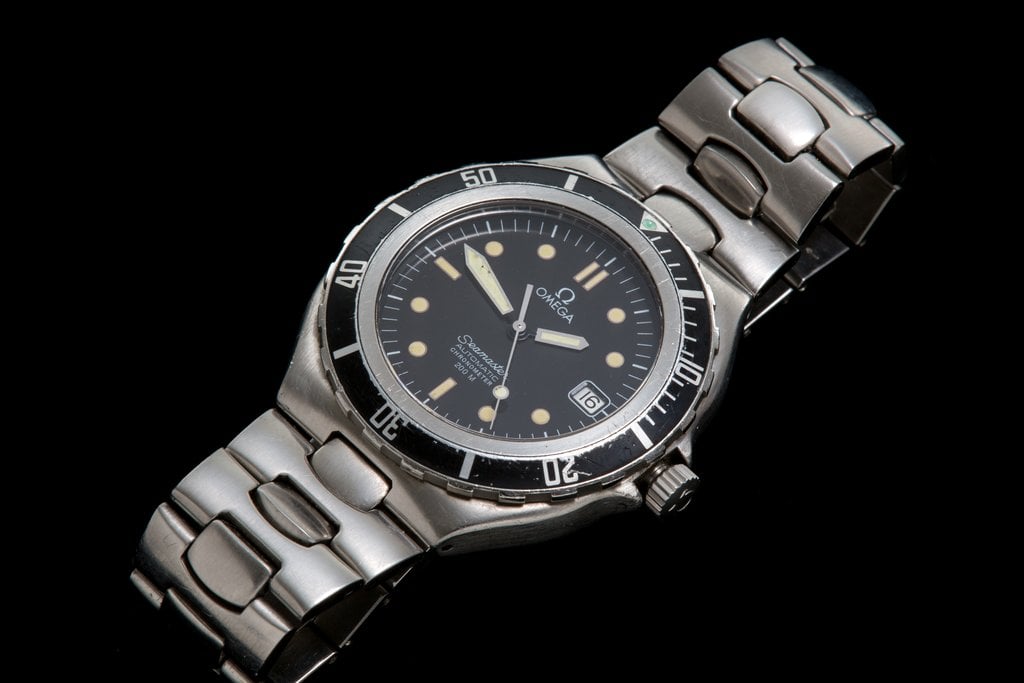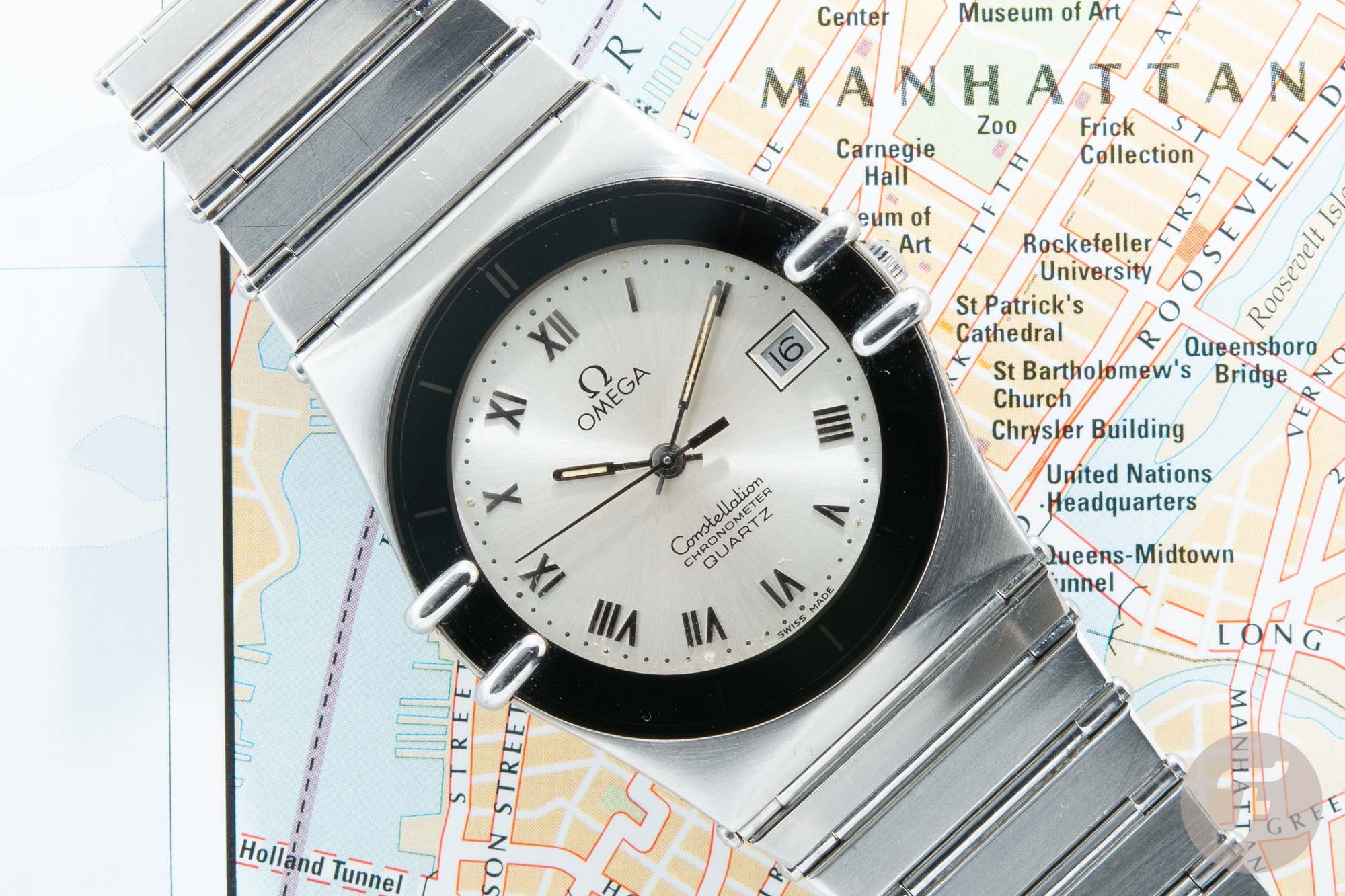Buying Guide: The Best Omega Watches From The 1980s
We like to talk about vintage watches a lot within the Fratello team. While the daily routine is largely focused on the most recent developments in the world of watches, the most fun for many of us lies in the world of vintage watches. It’s a world full of history, remarkable watches, incredible stories, and quirky details. It inspired us to come up with a series of articles focusing on the best watches per decade from a select group of brands. Some of them are priceless, some of them still affordable. In this installment, we will take a look at the best Omega watches from the 1980s.
While the 1970s marked a time of tremendous change in the watch industry, the 1980s showed the effects of that change. When Seiko started the quartz revolution, most Swiss brands never predicted the enormous long-term effects on the industry. It’s also why a lot of Swiss brands ended up in trouble with often disastrous results. In the 1980s, quartz was king, and you will see that reflected in some of the picks in the upcoming weeks. But some brands also stuck to their ways and led the way in the resurrection of mechanical watches in the late 1980s.
When it comes to style and design, the eighties were a special time. Often perceived as a decade with a lack of style or an abundance of tacky style, the 1980s were often frowned upon for great style. But over time, we have seen an increasing appreciation for some of the characteristic watches from the 1980s. So once again, there is plenty to discover if you are looking for a nice vintage piece from the 1980s.
Omega in the 1980s
Omega was one of those brands that went through tough times in the late 1970s and early 1980s due to the quartz revolution and the worldwide economic crisis. Where Rolex mainly focused on producing mechanical watches, Omega tried to compete with the Japanese brands. But despite the many great quartz and mechanical watches Omega released in the 1970s and 1980s, the SSIH that Omega was part of was bailed out by the banks in 1981. The quartz revolution also shifted people’s perception of a watch. Before the quartz revolution, a mechanical watch was the only wristwatch you could buy. But with Japanese quartz watches came a cheaper mass-produced option. It made many of the Swiss brands a less relevant option for the masses of consumers.
As a result, brands like Omega became luxury brands. Brands with watches that focus on their rich history and craftsmanship rather than quick comfort and convenience. And Omega releases quite a few watches that showed the brand was more than ready to take up that role. The 1980s are an interesting time because the brand created new designs the reflected the ’80s perfectly, used different materials and construction techniques, and equipped their watches with both quartz and mechanical movements—time to find out more.
The entry-point — Omega Seamaster Polaris 1/100 ref. DB 386.1231
The first watch could have easily been my personal pick for this list. I love the Omega Seamaster Polaris line of watches for many reasons. The watch was first introduced in 1982 and is an original Gérald Genta design. While the Seamaster Polaris is definitely different than his icons from the 1970s, it also has a lot in common with them. Just look at the remarkable case shape and the integrated bracelet. They are trades he incorporated in the Royal Oak, Nautilus, and Ingenieur as well. But the biggest surprise at the time might have been the combination of a titanium watch with a gold inlay. The special construction was unique because it almost feels like the gold is painted on the titanium case. How Omega produced a titanium case with a 2mm thick gold inlay is still one of the industry’s secrets.
But there is more to the story. The Seamaster Polaris came in a variety of different sizes for both men and women. Posterboy for the Polaris line in the 1980s was John McEnroe. He is one of my childhood heroes, making the watch even more special for me personally. Additionally, Genta and McEnroe represented a world of thinking differently and being unafraid not to please everyone. The first model that was released was a quartz version powered by an ETA 1420 quartz movement. And for a long time, Omega only equipped the Polaris models with quartz movements. In the early 1990s, the brand also released a few models with mechanical movements when mechanical watches regained their popularity. One of the most iconic is definitely a brilliant digital/analog hybrid that looks amazing.
A vintage Omega gem
The model you see is the Omega Seamaster Polaris 1/100, released as a limited edition for the Olympic Games in 1988 in Calgary and Seoul. It was the twentieth time that Omega was the official timekeeper of the Olympics. The special thing about this watch was that it was a rattrapante chronograph that measured 1/100ths of a second by using hands rather than a digital display. Inside the 38mm case, Omega used the quartz Calibre 1670 to power the watch. In the same year, Omega released the Seamaster Polaris 1/10, which — as you would have guessed — was the simpler version of the Polaris 1/100 that could measure 1/10ths of a second.
Fours years after Omega released a new version of the Polaris Chronograph for the Winter Olympics of Albertville and Summer Olympics in Barcelona in 1992. Those were the last new models introduced for the Seamaster Polaris line. The line was part of the Omega collection until 1993, when Omega introduced the Seamaster Professional 300M. In those ten years, Omega created a string of great Seamaster Polaris lines. My personal favorites are the Olympic editions and the version that McEnroe wore in the created ad. The latter goes for roughly 500 – 750 Euros. The Olympic models go for roughly 1,250 – 2,000 Euros. At one point, I will add a Seamaster Polaris to my collection because the story, design, and materials are too good.
My choice — Omega Constellation Manhattan
The Omega Constellation Manhattan is without a doubt the most iconic watch that Omega released in the 1980s. The watch that was released in 1982 is the foundation for the current Constellation line. However, the current generation cannot beat the beauty and ingenuity of the original Constellation Manhattan. I own a first-generation Constellation Manhattan, and I absolutely love that watch. So much so that it’s one of these few instances that I would like to own all the different first-generation configurations. The magic begins with its styling. As I explained in this in-depth article about the watch, I refused to accept that ’80s style had a big influence on me. But that was ignoring the facts.
There is something about the construction and the design that is intriguing. I decided to go for the full steel model with the champagne dial that you see below. As soon as I started wearing the watch, a couple of great things stood out. First off, at just under 33mm, the case size is petite. But thanks to the bracelet, it actually wears bigger. Secondly, the claws obviously stand out. While young Omega designer Carol Didisheim designed the watch, it was then-Omega-product-director Pierre-Andre Aellen who came up with the idea for the claws inspired by an unframed bathroom mirror. The claws were the solution to make the printing under glass technique possible. As you can see, the hour markers on mine have faded somewhat over time, but the ingenious construction made sure the watch could have a very slim profile.
Creeping up in price
Omega used the ultra-thin quartz Calibre 1422 they developed with ETA to power the first models of the Constellation Manhattan. In 1983, only a year after introduction, the brand introduced the Calibre 1431, the world’s first quartz movement to feature a servo-control system for the stepping motor that made using the watch’s features a lot easier resulted in saving battery power. In 1984 omega also decided to add a mechanical version to the lineup powered by the automatic Calibre 1111. It was essentially a renamed ETA 2892-2. This mechanical version was only produced for two years and is very hard to find.
Overall, Omega produced several different versions of the first generation quartz Constellation Manhattan. Mine is the full steel one with a champagne dial. The second full steel model comes with a black dial. That model looked super classy and was worn by actor Robert Wagner in the funny Bond-style ads for the watch. The third is the steel and gold model with a gold dial, and the fourth a gold and steel with a black dial. The last is the full gold version with a gold dial. The automatic versions came in steel with a black dial and steel and gold. Expect to pay roughly between 500 – 2,000 Euros depending on the configuration for the steel and the steel and gold models. Gold models are quite rare and go for a lot more. It might be no surprise that I want them all.
Money is no object #1 — Seamaster 120m Plongeur De Luxe “Jacques Mayol” ref. 396.0900
A watch with similarities in design to the Constellation Manhattan is the Omega Seamaster 120 Plongeur de Luxe. The watch was made famous by French freediver Jacques Mayol also known by his nickname “Dolphin Man.” He wore the watch on his wrist during a record-breaking free dive to 101 meters depth just off the coast of the Italian island of Elba in 1981. Omega released the Seamaster 120m Plongeur De Luxe line of watches in 1980 as the first series of quartz diving watches from the brand. The watch came in three different sizes and different materials. The most interesting is, without a doubt, the 37mm “Maxi” version with ref. 396.0900 that came in steel, bicolor and full gold. It does not happen, but I think all three versions look very clean and crisp even 40 years later.
The overall case design actually resembles the design of the Constellation Manhattan that was introduced two years later. So it might have been a source of inspiration for Carol Disdisheim when she designed the Constellation Manhattan. I love seeing that simple but very effective combination of lines of the case and the bezel and the dial. Additionally, you will see that the bracelet design was definitely inspired by Genta’s Royal Oak design. It’s something you could criticize, but as a big fan of that design, I love seeing it on another watch. On top of that, zooming in on the bracelet, it feels a bit sharper and edgier than the Royal Oak bracelet. But the combination of the case and bracelet design works very well, in my opinion.
A slim diving watch
Inside the case, Omega equipped the watch with the ultra-thin quartz Calibre 1337. The movement features a quickset date function, and along with the hour hand, they are set with the crown. To adjust the minute hand, you need to unlock the mechanism through a push button at the 2 o’clock position. As a result of the thin movement, the watch has a very slim profile at just 8mm thick. It made the watch very easy to wear in various situations despite being marketed as a diving watch. As you can see in the pictures, the watch had a diver extension that allowed you to increase the length from an extra 5mm to 25mm. It made sure that divers like Mayol were able to wear the watch over their diving suits.
I love this Omega Seamaster 120m Plongeur De Luxe because it is a different take on a diving watch. Usually, diving watches were chunky tool watches. Not this Seamaster 120m, though. On top of that, the Jacques Mayol story connected to the watch is also quite remarkable. In 2003 Omega released the Omega Seamaster Apnea as a tribute to Mayol, who passed away in 2001. Mayol also played an active role in its design process, making it an extraordinary tribute to one of the world’s remarkable divers. It’s not easy to find the Seamaster 120 Plongeur De Luxe in great condition. Prices for one are roughly between 1,5K – 4K depending on the condition. If you like Omega’s 1980s take on a diving watch, this could be a very nice addition to your collection. I will definitely be looking out for one.
Money is no object #2 — Omega Speedmaster Mark V ref. 376.0806
The next watch on the list is the Omega Speedmaster Mark V ref. 376.0806. The Speedmaster Mark series are interesting because they show a different take on the beloved Speedmaster through the years. When we are talking about the Speedmaster Mark V that was released in 1984, it is automatically tied to the Speedmaster Teutonic series released as an exclusive line for the West-German market in 1982. As Robert-Jan explained in his in-depth article about the Speedmaster Mark V, Omega referred to that Speedmaster series for the West-German market as the Speedmaster “Smooth Line” collection.
The Speedmaster Mark V used the same design for its 43mm case and bracelet. On top of that, it also features the same blasted stainless steel case and bracelet. The overall look and feel are completely different from any of the other Speedmaster models in the Mark series. And more quirks stand out. As Robert-Jan explained, the Mark V and a small number of Mark III pieces are the only non-Professional watches in the Mark series. On top of that, the dial layout is not like the typical 861 layout, and that’s due to the movement that Omega decided on using for the Mark V.
A legendary movement
If you turn the watch around, you are greeted by a Seamaster case back. It has the Seamaster logo on there and the number 1045 engraved. It refers to the Omega Calibre 1045 movement, which is based on the Lemania 5100 movement. This legendary chronograph movement was also used for the Speedmaster “Holy Grail” ref. ST376.0822, made famous and given its nickname by the late Chuck Maddox. It operates at 28,800vph, has 17 jewels, and features a 48-hour power reserve. The chronograph movement features a day and date indication, a small seconds sub-dial, and a 24-hour indication at 12 o’clock. The movement is also where the biggest difference is compared to the Teutonic series, powered by the famous Calibre 861. Maddox also wrote a great in-depth article on all the differences between the Teutonic and the Mark V that is definitely worth checking out.
The Speedmaster Mark V was the last model released in the Mark series. It’s also the oddball in the series when it comes to its looks. I love that it is an eighties statement different from all the other models in the series. It’s what makes the Speedmaster Mark series so interesting in the first place. Over time, as the 1980s increased in stylistic appeal, the Speedmaster Mark V has also become more popular and increasingly more expensive. Prices for one are roughly between 4K – 5K. For that money, you will get the most ’80s styled Speedmaster you will ever find.
Money is no object #3 — Omega Seamaster 200M ref. 368.1041
In 1988 Omega released the Omega Seamaster 200M series, more commonly referred to as the Seamaster Pre-Bond series. Like so many other series in the 1980s, the Seamaster 200M came in a mid-size (38mm) and full-size (40mm) version for both the quartz and automatic versions. Additionally, you will see that Omega released the watches, both in steel and a combination of steel and gold. If you would like the make a true ’80s statement, there is no other way to go than the bicolor version. If you chose that steel and gold option in the 1980s, you also had the option to choose either a fully steel bracelet or a steel bracelet with inlaid gold links. One final choice was either a black or champagne dial color. I don’t have to tell you what the right choice was to make you king of the eighties.
I will focus on the full-size versions as those are the most interesting, in my opinion. And you also seemed to like them when Mike wrote about it in his Wrist Game, Crying Shame article. The automatic version is the rarer version because most people were interested in quartz versions of the watch at the time of production. Subsequently, you will find that the most common models on offer are the quartz ones. The full-size versions featured a 40mm stainless steel case. The steel model featured a steel bezel with black inlay. The bicolor version featured a solid 18K yellow gold bezel with black inlay. Omega produced the initial versions of the watch with Mercedes-style hands and later switched to sword-style hands.
Steel or automatic?
It’s fairly easy to tell the quartz and automatic versions apart. First off, the text on the dial is different. The quartz version has three lines of text on the lower part of the dial, and it mentions the word “professional.” The automatic version has four lines of text that explicitly features the word “Automatic Chronometer.” Additionally, because of the different movements, the date window is placed differently. On the automatic version, the date window touches the minute markers. The date window is placed further inside the dial on the quartz version, and it doesn’t touch the minute markers.
Inside the case of the automatic version, Omega used the Calibre 1111 that they also used for the first generation automatic Constellation Manhattan. As mentioned, the movement is essentially an automatic ETA 2892-2 that operates at 28,800vph, had 21 jewels, and features a quickset date and a 44-hour power reserve. For the quartz version, Omega started out using Calibre 1441 and, after a year, switch to Calibre 1438. While the Seamaster 200M was on sale, the quartz version was slightly higher priced than the automatic version. Nowadays most, people are searching for the automatic version that tends to go for roughly 1,5K – 3K. The quartz version is slightly cheaper and sells for 1K – 2K, depending on the condition. While most people will make a distinct choice between automatic or quartz, I will go another route. I prefer the steel and gold option as the perfect ’80s statement.
Final Thoughts
In this series of articles, I cannot stress enough to do your research if you want to buy a vintage watch. On top of being crucial in not becoming disappointed with your purchase, it is also a lot of fun. Doing research and finding out about the watches you love is often the first connection you will make to a specific watch. Try to get your hands on Omega — A Journey Through Time and Moonwatch Only. Contacting a vintage expert will also help out a lot. It’s a great way to learn more about a watch and get to know some amazing people along the way.
After the explosion of great Omega models from the 1970s, the 1980s were quite different. The brand released quite a few great watches but creating a list of 10 watches that stand out would already be a challenge. Having said that, Omega did create one of the biggest icons from the 1980s with the Constellation Manhattan. And in this series of articles, I also stay away from most of the many Speedmaster models as we have our Speedy Tuesday articles to cover them.
Next week, we will take a look at some of the best Seiko watches from the 1980s, so keep your eye out for that. In the meantime, let us know in the comment section what your favorite Omega from the 1980s is.

